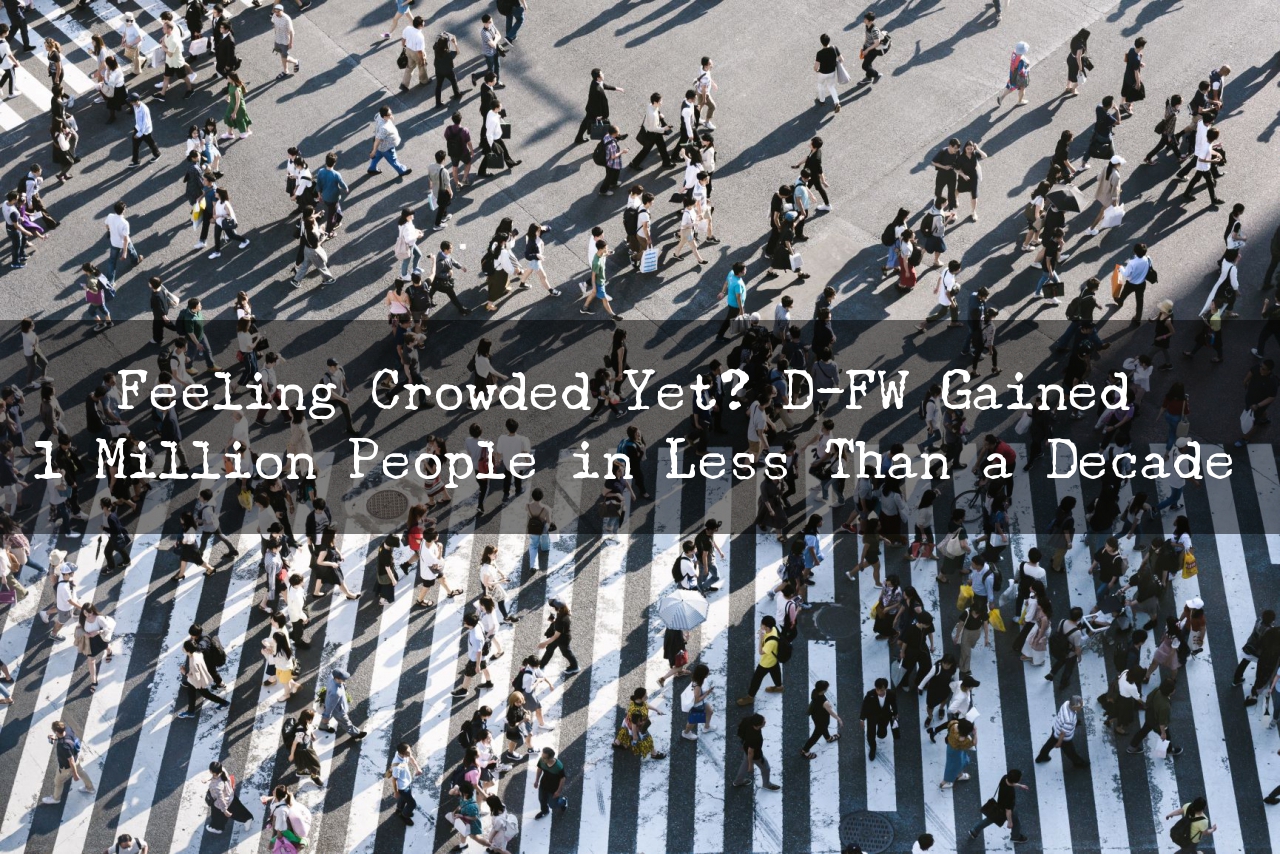Feeling Crowded Yet? D-FW Gained 1 Million People in Less Than a Decade
Dallas-Fort Worth has gained more new residents than any metropolitan area in the country, adding more than 1 million people in an eight-year period. The region's population now tops 7.5 million, solidifying North Texas' ranking as the nation's fourth-largest metro area. It trails only New York, Los Angeles and Chicago, all of which are losing residents. As for the state, new data from the U.S. Census Bureau shows Texas gained more than 3.5 million people from April 2010 through July 2018. That's the equivalent of 1,000 new residents a day — with a third of those settling down in D-FW. Despite fears that Hurricane Harvey would cause people to flee the Gulf Coast, the Houston region also added 1 million new residents from 2010 to 2018. Austin's metro area grew by just under 400,000 people, and San Antonio-New Braunfels gained 375,000. People moving to Texas from other states accounted for more than 1 million new residents, the most domestic transplants of any state except Florida.
"We've drawn a lot of people from the other 49 states, and they're attracted not only by the business environment but by affordable housing and good public schools," said Tom Luce, founder and chairman of Texas 2036, a privately funded policy group that's pushing state lawmakers to confront the issues that accompany growth. It's raised $5 million to focus public attention on the state's future education, health care, infrastructure, environment and public safety needs. The factors that make the metro area an attractive place to live could be jeopardized if local infrastructure can't keep up. "It's tough to win a national championship, but it's even tougher to repeat," Luce said. "The challenge will be remaining a magnet for business and talent."
The booming burbs
Suburban counties in D-FW grew at nearly twice the rate of Dallas County. With a 29.7 percent increase in residents from 2010 to 2018, Denton County was the 19th-fastest-growing county in the nation, followed by Rockwall County at 20th and Collin County at 21st. Though the urban core continues to add people, businesses moving into the suburbs have made places like McKinney, Frisco and Plano top destinations. "If you look at the top 40 fastest-growing counties in the country, you have most of the suburban counties in the metroplex represented," said Texas state demographer Lloyd Potter. "Most of their growth is from domestic migration, meaning people are moving from other states or within Texas...

